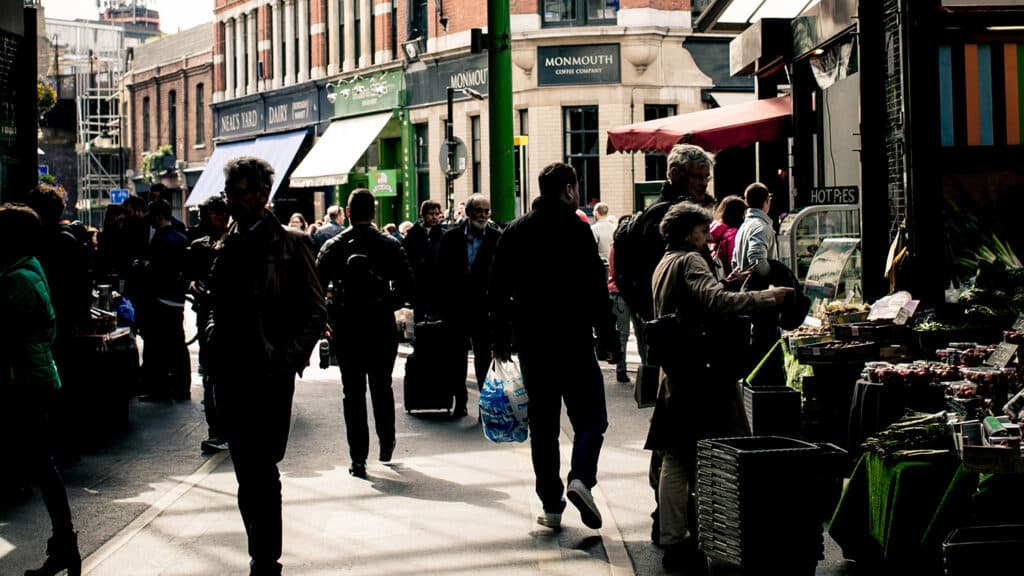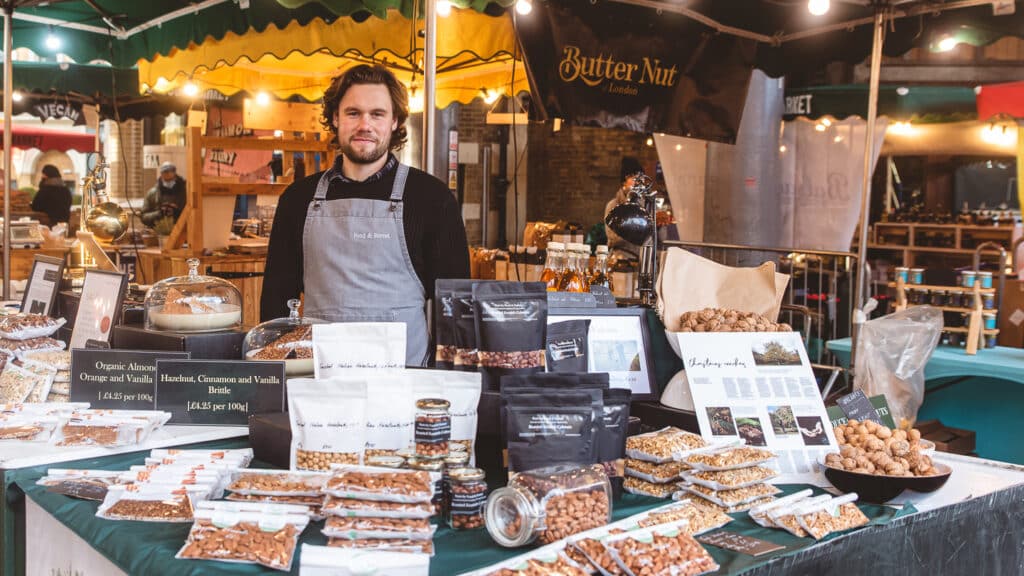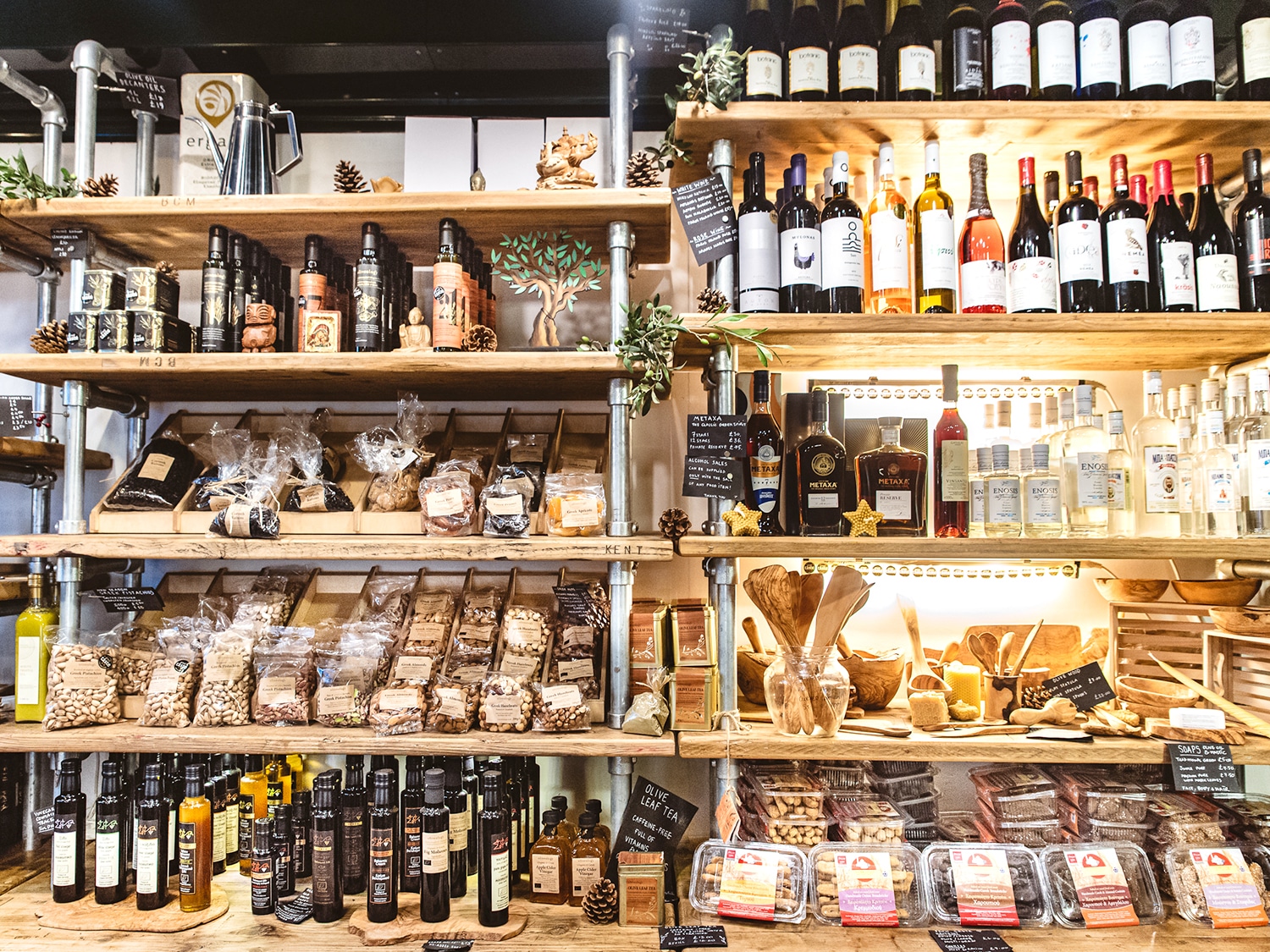The future of food in the climate crisis
Tom Hunt on the vital example that food markets can offer in the battle to reduce the impact of a broken food system


“TO MEND OUR BROKEN SYSTEMS AND LEARN TO REVALUE FOOD WE NEED TO RECONNECT WITH THE ORIGIN OF OUR FOOD”
Words: Tom Hunt
From the farm stalls to the world-class restaurants, Borough Market is a bubbling hub of sensory delights. However, it is far more than that. Produce markets like Borough Market are a keystone within sustainable food systems. They connect us, the eaters, with the web of producers who make our food. This brings myriad benefits to our communities from social, to economic, to ecological.
From farm to table, our food system is the biggest emitter of greenhouse gases. According to a paper published in Nature, food systems are responsible for just over a third of global anthropogenic greenhouse gas emissions. Of these, the vast majority (71 per cent) of emissions come from the use of land for agriculture or activities related to changes in land use, including deforestation and erosion. One of the most eye-opening figures is that 4.5 per cent comes from packaging alone.
Carolyn Steel is a leading thinker on food and cities and the author of the Sitopia: How Food Can Save the World (2020). Her concept of sitopia (‘food-place’, from the Greek ‘sitos’, meaning food, and ‘topos’, meaning place) provides a vision of a better food system that values food and the communities that surround it.
I asked Carolyn what role food markets play in a sitopian food system. She told me: “Food markets play an essential role in a sitopian food system, since they epitomise everything that sitopia is about: valuing food, close connections between city and country and putting good food at the heart of society. If we want to move towards a more regional, regenerative, sustainable food system, markets have a pivotal role to play, both in supporting the local food networks essential to such a system, and in engaging city-dwellers with food and inspiring them to care about what they eat.”
I also asked her how food markets can influence and contribute towards a carbon neutral community. “Building more resilient regional food systems based on regenerative agriculture will play a key part in helping us transition to a carbon neutral economy,” she replied. “Since food markets have a crucial role to play in helping us build such systems, they will form the natural heart of such a transition, both as food hubs serving local communities and as vital places of exchange between farmers and customers. The sociability of markets creates a positive feedback loop in which urban and rural communities come together to learn from each other and to embrace the challenges (and pleasures) of eating better to improve our lives and save the planet.”
Through our separate disciplines, Carolyn and I have both come to a similar conclusion: food has lost its true value. To mend our broken systems and learn to revalue food we need to reconnect with the origin of our food and, ultimately, nature. Shopping at a produce market brings us one step closer to our food’s origin. It allows us to interact with our food producers and farmers, shortening the food chain, cutting out the middleman.
Produce markets:
— Connect us with our food and farmers
— Stimulate food localism and increase the presence of farms local to cities
— Shorten the food chain
— Reduce packaging waste
— Reduce food waste
— Promote the decommodification of food
— Promote regenerative agriculture and carbon negative food

To reach carbon neutrality we need to lower emissions but also increase carbon capture to compensate for manmade carbon emissions. The oceans and earth are our planet’s natural carbon sinks. The oceans play the biggest role, but on land it’s our soil that captures almost 80 per cent of the carbon.
Certain foods can sequester carbon from the atmosphere. Foods that draw down more carbon than they emit are known as ‘carbon negative’. These include seaweed and bivalves such as oysters, mussels and clams, which store carbon in tissue and shell material. This is also true of some closed-loop farming systems like permaculture and agroforestry, a type of farming that includes trees within a diverse crop system.
Some of the traders at Borough Market are practicing these regenerative forms of farming, including the Food & Forest nut stall, run by Charles Tebbutt. Food & Forest is a community interest company established to expand the use of agroforestry. In practice, this means creating the three key ingredients needed for alley cropping to flourish: demand for produce, production capacity, and a well-structured grant system.
The sort of better farming practices that you might find at a food market help reduce emissions and sequester carbon by building soil with organic matter. Better soil increases nutrition and therefore flavour. That’s why organic and agroecological produce doesn’t just do good. It tastes good too.


